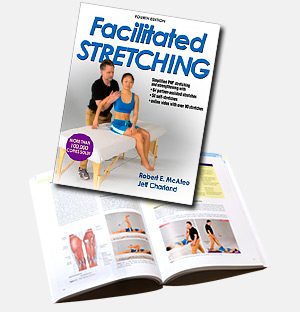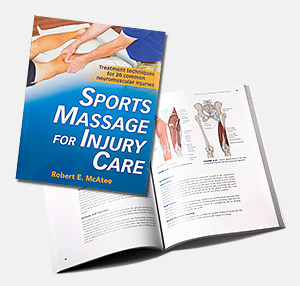It’s high season for trailrunning and now is a good time to talk about the potential for overuse problems to crop up. Increased mileage or intensity carries with it an increased chance for injury. Although some athletic injuries are of sudden onset, like blowing out a knee skiing, or spraining a wrist falling off a mountain bike, most sports injuries, especially among runners, are the simple result of overuse and can be prevented.
By far, the most common overuse injury, across all sports, is tendinitis. Overuse tendinitis begins with microscopic tears in the tendon that initiate an inflammatory response. Over the course of several months, as the tendon is consistently stressed by too much running, or improper training techniques, this repetitive tearing and inflammation can lead to the formation of adhesions and scar tissue on the tendon. The resulting tendinitis can be intermittently or constantly painful, depending on the severity of the injury. The most common overuse injuries suffered by runners are Achilles tendinitis and hamstring tendinitis.
Three Stages of Tendinitis
The typical onset of overuse tendinitis goes something like this:
- You may notice minor twinges of pain in a muscle or tendon. The pain usually occurs early in your workout and goes away once you’ve warmed up. So, you ignore it and keep on running. This is your first mistake! At the very least, pain should indicate that you need to modify your exercise routine and begin to use ice massage after workouts. By the way, by the time you feel these twinges, you’ve been developing the injury for two to three months.
- As the overuse injury progresses, the pain takes longer to go away and will often return following your workout. This is a sure sign that something is wrong. Unfortunately, most of us were taught, and still believe deep down, that training through the pain will make us stronger. We continue to learn the hard way that there’s a better choice to make.
- The final stage occurs when the pain becomes constant. This is usually when we start looking for a cure, because now the pain is forcing us to take time off.
Slow to Heal
Because tendons are made of dense connective tissue with a limited blood supply, tendon injuries can be slow to heal.
How to prevent tendinitis
- Use sound training principles (cross-training, hard/easy days, rest) adapted to your particular needs.
- Incorporate pain-free stretching into your training routine. If you dont have enough time to workout and stretch, shorten the workout!
- Make use of professional sports massage for enhanced recovery and the early detection of overuse injury.
- Modify or discontinue training if problems begin to appear.
Ice Massage
- Freeze water in a paper cup.
- Peel away an inch or so of the cup to expose the ice.
- Place the ice on the skin and move continuously over the injured area for 5-10 minutes, or until the skin is pink and numb.
- Repeat as often as once per hour for pain relief.
That’s why rest alone is not usually sufficient to resolve tendinitis.This process is complicated by the formation of scar tissue on the tendon, because scarring can become a source of continued irritation to the healthy tissue around it, leading to recurring pain.
Even at stage 1 above, your tendinitis is already well-advanced. Since overuse injuries develop over a period of 1-3 months before they reach stage 1, the ideal situation is to discover the problem early, before any noticeable symptoms appear. This is the ultimate preventive care.
Preventive Care
Here’s how to uncover pre-symptomatic tendinitis. Our ‘rule of thumb’ is that healthy muscles and tendons don’t hurt when you press on them firmly. If you have pain with pressure, you have a problem. You can use a massage stroke called ‘transverse friction’ to ferret out potential tendinitis, wherever you may be at risk for it. Place your thumb or finger over the tendon and rub with firm, steady pressure back and forth across the grain of its fibers. (All tendons are made of fibers that run parallel to each other along the tendon.) Your thumb and your skin move together across the tendon. There should be no sliding of your thumb on the skin. Start with moderate pressure and gradually build to fairly strong pressure. If this causes considerable discomfort (i.e. Pain!), it’s a good indication that you have some tendinitis. The best time to fix it is in this pre-symptomatic phase, before it reaches stage 1. You may be able to resolve the problem with a few days of rest, stretching, and ice massage. If the tendon also has adhesions or scarring from repeated microtrauma, then rest and ice will not be enough to cure the injury. You’ll need a special technique called Deep Transverse Friction (DTF).
Deep Transverse Friction Massage (DTF)
DTF softens and breaks down the excess scar tissue, allowing the tendon to heal properly and function more efficiently. DTF is easy to learn and use and, in many cases, you can care for your own tendinitis. But you must be sure you’re doing it properly. Seek out a competent massage or physical therapist who can show you the specific treatment appropriate to your situation. Remember, the treatment itself can be painful, so start conservatively and build your confidence and pain tolerance slowly. For minor tendinitis, two or three treatments are usually enough. For more severe overuse, twelve or more treatments may be necessary. When accompanied by ice massage and appropriate rest and stretching, DTF can be extremely effective in permanently eliminating overuse tendinitis.
Rehabilitation Phase
Once the injury has been treated properly and you are pain-free, you should have a rehabilitation phase to get you ready to run. Consider adding some light strength training to build the endurance of the muscles and tendons that were involved in your injury. Return to running slowly, to give yourself time to adapt appropriately before you increase the length or intensity of your runs.
About the Author
Bob McAtee NCTMB, CSCS owns Pro-Active Massage Therapy in Colorado Springs, CO. His clientele includes Olympic and professional athletes, dancers, performers, and recreational athletes. A massage therapist since 1981, he was certified in sports massage in 1986 through the Sports Massage Training Institute, is a member of the AMTA National Sports Massage Team, is Nationally Certified in Therapeutic Massage and Bodywork (NCTMB), and is a certified strength and conditioning specialist (CSCS), through the National Strength and Conditioning Association. Feel free to contact him at (719) 475-1172 or stretchman@stretchman.com
©2000 by Robert E. McAtee
Originally published in Trail Times

